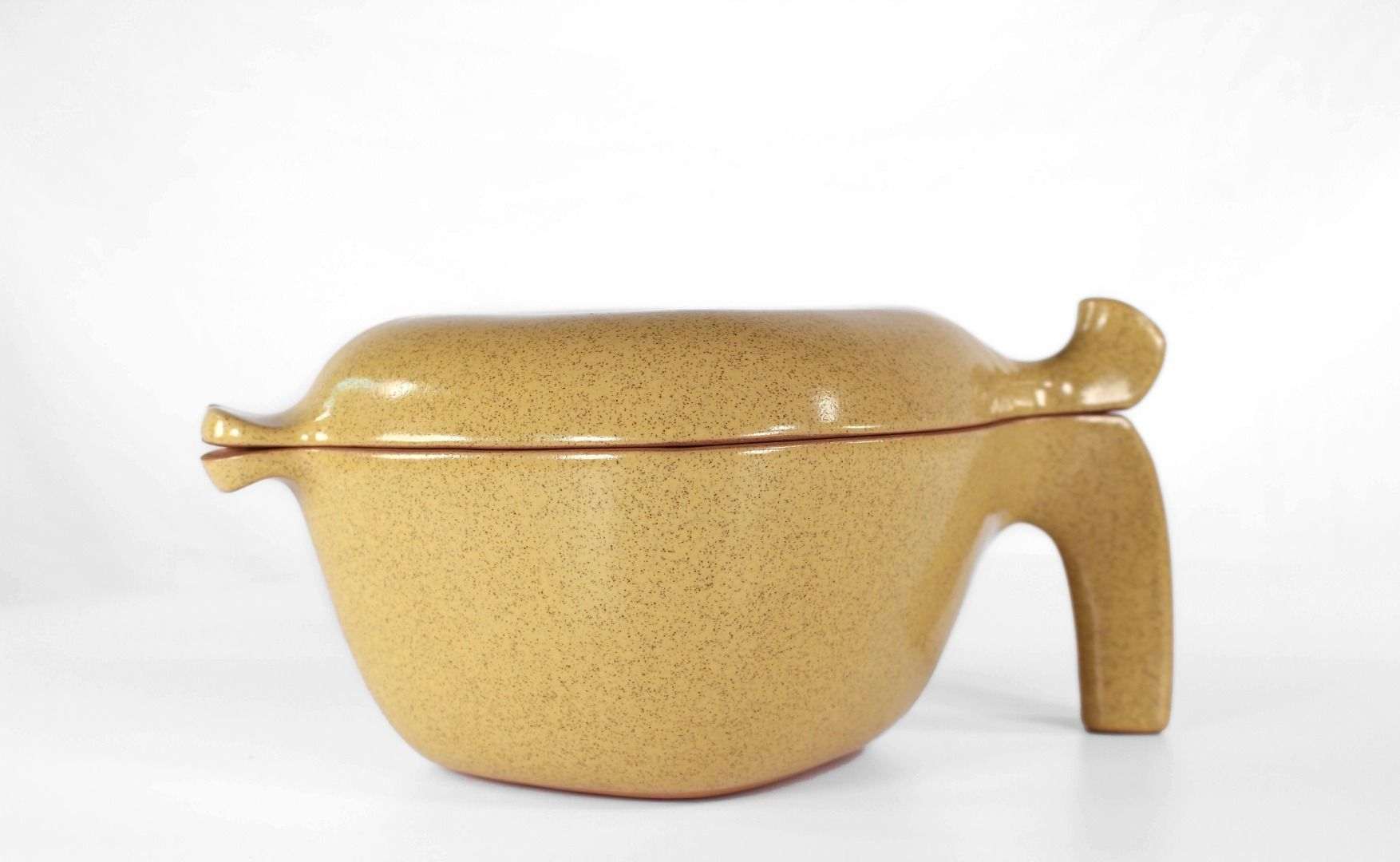Born and raised in Maine, Glidden Parker (1913-1980) began his studies at Bates College in order to become a writer. He graduated in 1935 with a B.A. in literature, and spent the following year in Vienna, studying an array of topics, including philosophy, film, comparative literature, and German literature. After returning home to Maine, where he worked for a time on a never-published novel, Parker travelled to Alfred, New York, to visit with relatives in 1937. In Alfred, he became familiar with the ceramics department at Alfred University and fell in love with the medium of clay. Parker enrolled as a ceramics student and studied at the university from 1937 to 1939. In 1940, Parker founded Glidden Pottery in Alfred, designing several dinnerware lines made from a durable stoneware he developed personally. Initially Parker employed just a few fellow students from Alfred, including his wife Harriet (Pat) Hamill, who was an expert in glazes and formulated all of the early glazes used by the company. Parker successfully marketed his dinnerware lines to stores in New York City, and while production started slowly, by 1945 Glidden Pottery was selling 150,000 pieces every year and employed fifty-five individuals. Parker’s success continued into the 1950s with consumers around the country purchasing his products, which were often written about and advertised in magazines such as Better Homes and Gardens, Good Housekeeping, and House Beautiful. Later in the decade, however, Glidden Pottery began struggling to compete with imported, inexpensive dinnerware. Parker downsized the company several times, and finally closed his factory in 1957. Parker participated in several Ceramic National exhibitions at the Syracuse Museum of Fine Arts (today the Everson Museum), showing his work in 1938, 1939, 1947, 1949, 1951, and 1952. He submitted Casserole Dish to the 14th Ceramic National in 1949, along with another Casserole Dish and a sixteen-piece dinnerware set. While Glidden Pottery already had a national reputation as quality dinnerware, showing in the Ceramic National would have brought Parker still more prestige. The pair of casserole dishes won a purchase prize awarded by Richard B. Gump for “best ceramic design suitable for mass production.” Parker split the $500 award with Mary Scheier, a ceramist from New Hampshire, who won for her Coffee Set. Casserole Dish is glazed in Mustard, one of the most common glazes used by Glidden Pottery and developed by Pat. The photograph below shows Casserole Dish in the center of a display in the 14th Ceramic National, flanked by a taller casserole dish on the left and Scheier’s Coffee Set on the right.
Casserole Dish is currently on view in Casual China: Modernist Dinnerware.
-Steffi Chappell, Assistant Curator
Everson Museum of Art, Ceramic National Exhibition Archive
Sources: 1. Everson Museum of Art Ceramic National Exhibition
Archive 2. Ronald J. Kransler, Glidden: Alfred Mid-Century Highstyle Stoneware, Boca Raton, Florida: Universal Publishers, 2011.



